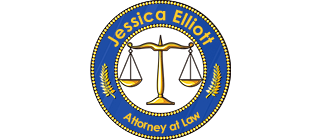Next, open the page/post where you want to add the image upload form. Once there, click the ‘+’ button in the top left corner of the screen to open the block menu. Add multiple images as layers, resize, and arrange them into a grid or freeform layout.
Favicon File Format Support
- Choose the category that best fits your website—whether it’s an online store, blog, portfolio, business site, or something else.
- You will need to have images saved to your computer and then uploaded to your site.
- Once you are there, click the ‘Add Block’ (+) button at the top left corner of the screen to open the block menu.
- By using these attributes, you can ensure that your images fit well within your web page layout and have the desired visual appearance.
Once you’re happy with the page, you can make it public or private. If you’re unsure what your website should include, read this article about the 12 critical elements every site needs. Do some brainstorming to determine which pages you need the most, and start from there.
Tables
Finally, click the ‘Publish’ or ‘Update’ button to store your settings. Now, simply click the ‘Select’ button to upload the image to the block editor. Alternatively, to add an image from the Media Library, just switch to the ‘Media Library’ tab. After that, you can switch to the ‘Upload Files’ tab to upload an image from your computer. First, you need to visit the page coding jobs or post where you want to add the image from the WordPress dashboard.
What is ImageKit’s free media hosting service?
- Do some brainstorming to determine which pages you need the most, and start from there.
- For a great user experience, use animated hotspot markers to show people what to click on.
- In this detailed blog, we share essential techniques and expert tips on How to Add Background Images in HTML.
- Regarding digital products or services, you should take another approach to product images.
Simulate real workplace webp vs png situations in an online learning environment. Combine clickable visuals with branching scenarios and gamification to design interactive training, onboarding, and health and safety materials that click with learners. Annotate images with contextual information in a user-friendly format.
Discover a world of interactive content
- You can then send them a request detailing how and where you plan to use the image and ask for their permission.
- This can increase your website’s rankings and improve the accessibility of your web pages for people with disabilities.
- You can do it for free in Genially, without writing a single line of code.
- While it’s always good practice to give credit, it’s especially important when using someone else’s work under a Creative Commons license or similar agreement.
- By following best practices for image optimization, accessibility, and responsive design, you’ll create visually appealing and user-friendly web content.
When not coding or writing, I enjoy crocheting, reading and listening to podcasts. While this method worked in the past, it’s considered outdated and is not recommended for modern web development. It’s better to separate content from presentation by using CSS for alignment. Aligning an image within the text using the align attribute is an approach that was once used in older versions of HTML. It’s important to set appropriate dimensions to maintain aspect ratios and ensure responsive design.










What do you think?